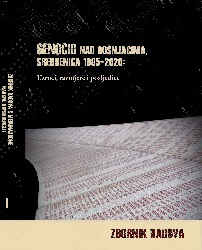Strategija negiranje genocida: od Markala do Srebrenice
Genocide Denial Strategy: From Markal to Srebrenica
Author(s): Hikmet Karčić
Subject(s): Political history, Studies in violence and power, Victimology, Transformation Period (1990 - 2010), Politics of History/Memory, Peace and Conflict Studies
Published by: Institut za istraživanje zločina protiv čovječnosti i međunarodnog prava Univerziteta u Sarajevu
Keywords: genocide denial; Markale; Srebrenica; Bosnia and Herzegovina;
Summary/Abstract: Denial of genocide and mass crimes committed by Serb forces has been in progress since the 1992–95 war in Bosnia and Herzegovina. To gain sympathy from the western forces and have them intervene, after the first massacres in occupied Sarajevo, Serb propaganda machinery accused the government of RBiH of shelling and sniper fire over its citizens. Notorious massacres in the streets Vase Miskina, Markale I, and Markale II, as well as the square known as ‘Gate’ in Tuzla, were subjected to ridicule by the Serb media. News about the concentration camp in Krajina during the summer of 1992 and the news about mass rape were dismissed as propaganda. Genocide in Srebrenica has since been denied and was subjected to conspiracy theories. A quarter of a century after the genocide, despite numerous judicial processes and vast forensic evidence, the denial of genocide and other crimes grows ever stronger. Notable western writers have also denied the genocide and other crimes including Jessica Stern, Noam Chomsky, Diana Johnstone, and Peter Handke. During the last decade, genocide denial has become the official strategy of the Republic of Serbia and Republika Srpska. In this paper, I will focus on key actors and their arguments in genocide denial and mini- mization of genocide and other crimes committed. I will demonstrate the sophistication of genocide denial developed over the years.
- Page Range: 677-691
- Page Count: 15
- Publication Year: 2021
- Language: Bosnian
- Content File-PDF

